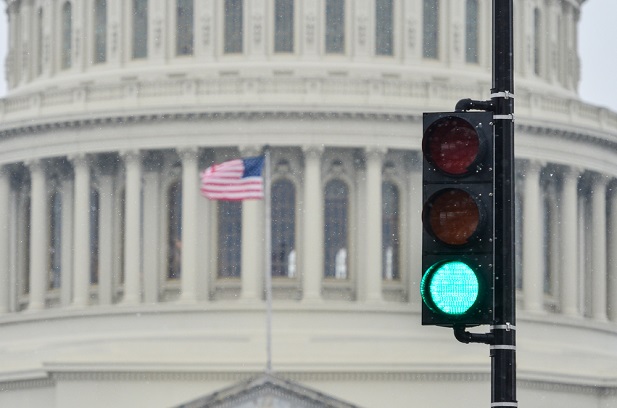 Labor's limited authority under administrative law is cited as the reason for the final rule's narrow interpretation. But does its subsequent RFI suggest otherwise? (Photo: Shutterstock)
Labor's limited authority under administrative law is cited as the reason for the final rule's narrow interpretation. But does its subsequent RFI suggest otherwise? (Photo: Shutterstock)
The Labor Department's final rule on Multiple Employer Plans that defines when a Professional Employer Organization or bona fide group or association of employers can sponsor a retirement plan will do little to materially improve access to workplace plans, according to Kent Mason, a partner with Davis & Harman.
“The rule is only marginally helpful, and is far short of what it could be and what it needs to be,” said Mason in an interview.
Labor's rule prohibits so-called Open MEPs, which would allow non-affiliated employers to pool employees under one defined contribution plan. Instead, Labor limited the formation of pooled plans to employers that satisfy commonality criteria: either a shared trade or industry, or shared geography within a single state or metropolitan area.
The final rule also prohibits financial services firms from sponsoring MEPs.
Regulators within Labor's Employee Benefits Security Administration conceded the final rule is significantly narrower than the Open MEP provisions in the Setting Every Community Up for Retirement Enhancement, or SECURE Act.
Labor's limited authority under administrative law is cited as the reason for the final rule's narrow interpretation.
“This rule is significantly more limited in scope [than legislative proposals like the SECURE Act] because it relies solely on the Department's authority to promulgate regulations administering title I of ERISA. Unlike the Department, Congress has authority to make statutory changes to ERISA and other areas of law that govern retirement savings, such as the Code,” according to language in the final rule's preamble.
But in a Request for Information on Open MEPs that was filed commensurately with the final rule, the Labor Department left the door open for Open MEPs.
“The Department is persuaded that open MEPs deserve further consideration,” the RFI says. “The Department does not believe that it has acquired a sufficient public record on, or a thorough understanding of, the complete range of issues presented by the topic.”
The RFI later suggests that Labor indeed does have the regulatory authority to green-light Open MEPs:
“The Department has broad authority to craft regulations under section 505 of ERISA. This section provides, in relevant part, that 'the Secretary may prescribe such regulations as he finds necessary or appropriate to carry out the provisions of this subchapter.' This authority extends to situations where, as here, the text of ERISA section 3(5) is ambiguous on its face.”
The rationales provided for not including Open MEPs in the final rule, and for exploring them in the RFI, appear to be in conflict, says Mason.
“It is not clear how to reconcile DOL's statement in the MEP regulations about lacking authority to do open MEPs with their RFI regarding the possibility of adopting open MEPs by regulation,” he said.
That juxtaposition is odd, added Mason.
“The two pieces of guidance are in conflict regarding DOL's authority. If they think they have the authority to do Open MEPs, why did they issue these regulations that won't do as much as Open MEPs? It's very hard to figure,” he said.
As Congress prepares to break for the August recess, the fate of the SECURE Act hangs in the balance. When the bill made it out of the House of Representatives in May by a near unanimous vote, the safe money was that the bill would sail through the Senate.
But a couple of hang ups on non-retirement plan provisions in the bill have left it stalled, and that's tempered hope for the SECURE Act's passage this year. For it to get to President Trump's desk, it will likely have to be packaged in one of 12 must-pass appropriations bills.
The lingering concern over the Labor Department's authority to approve Open MEPs underscores Congress's need to act, said Mason.
“We really very much need Open MEP legislation,” he said.
READ MORE:
Open MEPS or not? Let the legislative sausage-making begin
© 2025 ALM Global, LLC, All Rights Reserved. Request academic re-use from www.copyright.com. All other uses, submit a request to [email protected]. For more information visit Asset & Logo Licensing.








